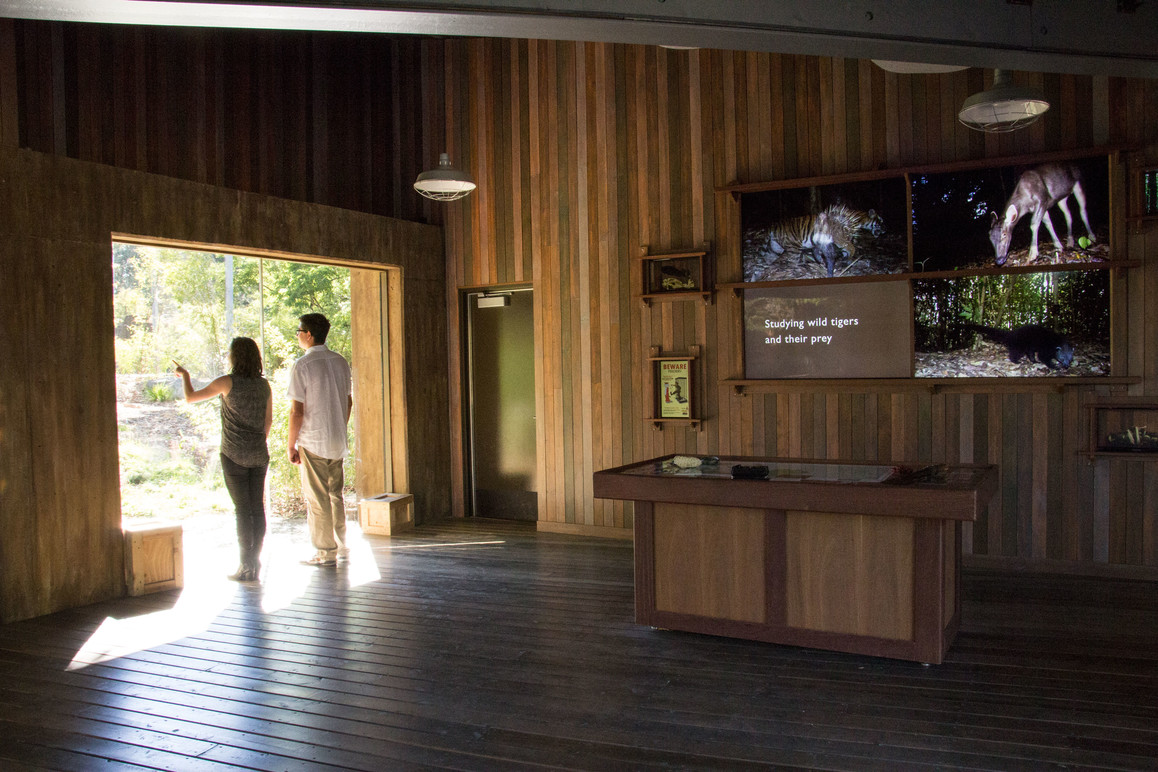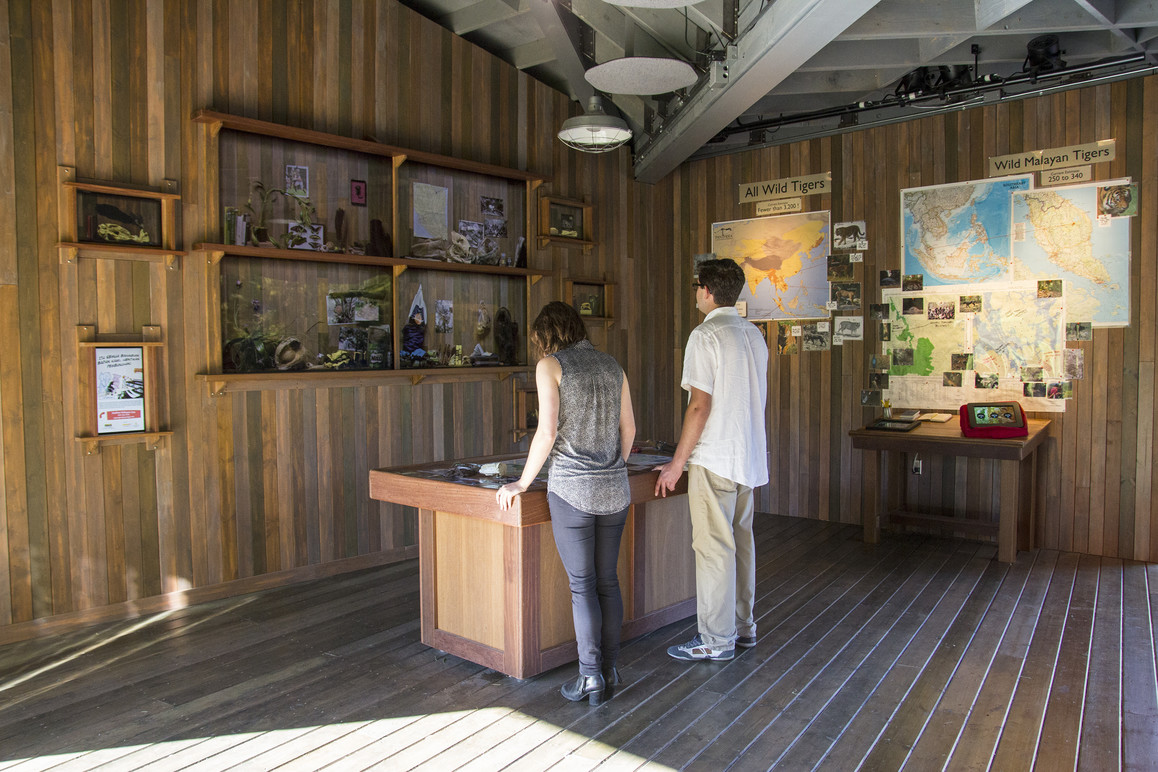Media Installation and Tablet Stations
Conservation Field House: Malayan Tiger Interactive Visitor Experience
Client:
Woodland Park Zoo
Venue/Location:
Seattle, WA
Browse:
Media Experiences
Client:
Woodland Park Zoo
Browse:
Media Experiences
With the much-anticipated arrival of three Malayan Tigers, Woodland Park Zoo asked Belle & Wissell to create an interactive exhibit to accompany their debut. The Conservation Field House features two distinct experiences: an immersive media installation and two interactive tablets, each containing three activities.
Zoo visitors can catch a glimpse into the daily lives of field biologists working to protect tiger populations and their habitats. A central table, strewn with documents and maps, also features various items frequently used and encountered by conservationists. When a zoo visitor touches an object on the main work table, nine displays—which at first appear only to be part of the Field House environment—come to life, presenting short films that tell important stories about saving the Malayan Tigers. This approach includes surprising physical-meets-digital interaction—delivering crucial information with lasting impact.
Two touch tablet stations—outfitted with rugged protective enclosures like those used in the jungle—offer visitors more individualized engagement. Participants choose between three activities: a Conservation Quiz, Notes of Gratitude, or the Tiger To-Do List. These interfaces invite the user to envision themselves as a key actor in the efforts for tiger conservation. Through their quiz results, messages to individuals in the field, and pledges of commitment, each zoo visitor leaves the Conservation Field House with a renewed sense of their own ability to affect positive change.
Belle & Wissell Team Credits
Principal: Gabe Kean
Creative Director: Thomas Ryun
Senior Designer: Edrea Lita
Designer: Eric Harvey
Studio Producer: Sarah Trueblood
Technology Lead: Edward Tang
Senior Developer: Scott Thiessen
Programmer: Alex Maurouard
Studio Coordinator: Natalie Karbelnig
Additional Project Credits
Interpretive Engagements
Coordinator: R. Scott Vance
Associate Director, Interpretive Engagements: Carla Bitter
Interpretive Engagements: Kristin Quirk
IT – Systems Administrator: Jay Wallace
Capital Programs: Monica Lake
Belle & Wissell Team Credits
Principal: Gabe Kean
Creative Director: Thomas Ryun
Senior Designer: Edrea Lita
Designer: Eric Harvey
Studio Producer: Sarah Trueblood
Technology Lead: Edward Tang
Senior Developer: Scott Thiessen
Programmer: Alex Maurouard
Studio Coordinator: Natalie Karbelnig
Additional Project Credits
Interpretive Engagements
Coordinator: R. Scott Vance
Associate Director, Interpretive Engagements: Carla Bitter
Interpretive Engagements: Kristin Quirk
IT – Systems Administrator: Jay Wallace
Capital Programs: Monica Lake
With the much-anticipated arrival of three Malayan Tigers, Woodland Park Zoo asked Belle & Wissell to create an interactive exhibit to accompany their debut. The Conservation Field House features two distinct experiences: an immersive media installation and two interactive tablets, each containing three activities.
Zoo visitors can catch a glimpse into the daily lives of field biologists working to protect tiger populations and their habitats. A central table, strewn with documents and maps, also features various items frequently used and encountered by conservationists. When a zoo visitor touches an object on the main work table, nine displays—which at first appear only to be part of the Field House environment—come to life, presenting short films that tell important stories about saving the Malayan Tigers. This approach includes surprising physical-meets-digital interaction—delivering crucial information with lasting impact.
Two touch tablet stations—outfitted with rugged protective enclosures like those used in the jungle—offer visitors more individualized engagement. Participants choose between three activities: a Conservation Quiz, Notes of Gratitude, or the Tiger To-Do List. These interfaces invite the user to envision themselves as a key actor in the efforts for tiger conservation. Through their quiz results, messages to individuals in the field, and pledges of commitment, each zoo visitor leaves the Conservation Field House with a renewed sense of their own ability to affect positive change.







